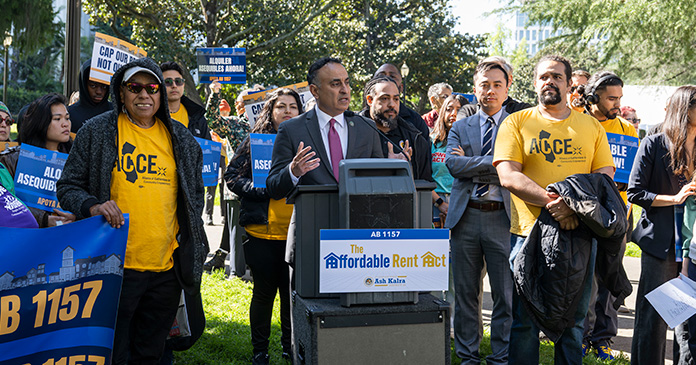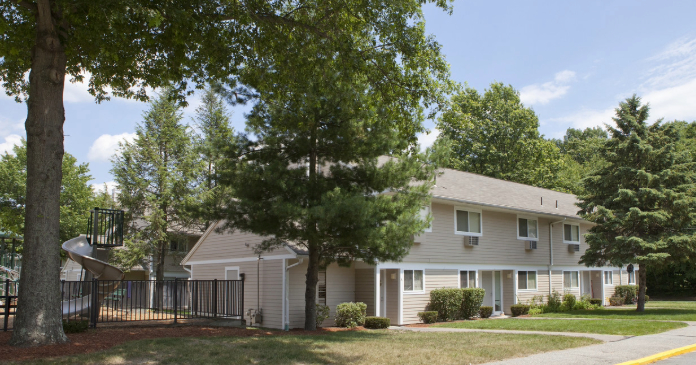Streets were lit only by starlight, and that was in short supply through threatening cloud cover. I could not get to the front door of my home without crawling over giant, ice-encrusted sycamore limbs.
Scenes from The Day After come to mind.
It was a hard season for American Electric Power, but for anyone who owned a chainsaw, firewood, heating oil, or tow truck, it was a heyday. It was also an adventure; the storm left us a new generation of stories to tell. Best of all, it was a time to see Americans doing what they do best: rising through adversity and bringing their neighbors along with them. Homes with fireplaces were freely opened to families with no heat; senior citizens were rescued, lost animals were taken in, commodities were freely shared, and everyone got to know their neighbors and co-workers a little better.
America is facing what former Federal Reserve Chair Alan Greenspan calls a “once-in-century type of event.” The $700 Billion Bailout is growing to an estimated $2.2 trillion dollars, as reported by the N.Y. Times. This includes $1.5 trillion as temporary guarantee for new senior debt, and $500 billion to insure deposits for non-interest-bearing, primarily business accounts. The full impact of this event on the multifamily housing market is yet to be imagined. The outcome remains largely in how America perceives and responds to this storm.
How we got here
The bread crumb trail to America’s current economic crisis begins with unprecedented gasoline and energy prices. Home ownership peaked in 2004 to record levels due to available financing at higher risk and adjustable rate mortgages (ARMs). Foreclosures subsequently increased dramatically in 2005 because of mortgagors’ inability to pay higher interest rates, and the building boom ended with huge supply. Formerly owner-occupied single family homes and condominiums emerged as a larger presence in the rental market. In July 2008, President Bush signed the housing stimulus package that offers home buyers tax credit incentives. The bill will eventually reduce the supply of privately owned rentals in the marketplace, thereby shrinking the rental market as well as energizing home sales.
Ultimately, the failing mortgaged-backed securities (MBS) that were bought by foreign investors resulted in investors moving their money to safer horizons. The federal government seized Freddie Mac and Fannie Mae at the cost of about $200 billion. Then there was Lehman Brothers and AIG, and the $700 billion emergency rescue.
Where we are today
The National Multi Housing Council’s second quarter 2008 survey reports that the apartment market has weakened slightly due to changes in occupancy and rates from the first quarter. The NMHC chief economist, Mark Obrinsky, stated that the apartment industry is generally profiting from the lack of housing sales and home ownership in 2008 Q1, with the lowest home-ownership rate in over five years.
Tightening credit parameters has slowed the loss of renters to the housing market.
The National Association of Home Builders reports an annual decrease in its Multifamily Rental Market Index (MRMI) for the second quarter 2008. The index is extrapolated from a survey of multifamily builders and developers. Difficulty in getting financing for new apartment construction has added to the drop.
Multihousing Industry economists like Mark Obrinsky and Delores Conway of Casden Real Estate Economics, are looking closely at the unemployment rate in predicting apartment market performance. August
2008 reports an annual 6.1 percent unemployment rate, the highest since 1993.
VaultWare, the online availability provider for over 625,000 apartment units, reports a national year-to-date average rental rate decline of 2.9 percent and a vacancy increase from 3.5 percent to 5.6 percent in their www.padzing.com survey of over a million apartment units.
All in all, the reported changes in the multifamily housing industry consummate a modest bump in the road considering the doomsday prophesies and political badminton the event has ignited.
Many businesses are reporting remarkable profits. McCormick spice sales rose 9 percent to $782 million in the third quarter. Private label sales are up at Walgreens by 15 percent. VaultWare’s Online Marketing Index for September 2008 indicates three times more availability sessions generated by secondary Internet listing services. This figure indicates free listing services are rapidly seizing market share. The property Web site remains the leading source for online availability sessions. A recent survey conducted by Apartments.com, the largest apartment listing service next in number to Rent.com’s online locating service, recently conducted a survey of two thousand renters. Fifty-two percent of the respondents had been renters from one to five years. They reported that they chose to rent above owning because of affordability. Thirty percent of renters enjoy the lifestyle: service, amenity access, flexibility and location. The Apartment.com survey shows that the majority of renters who made a choice to move this summer did so because they wanted to be closer to work (not surprising considering gasoline prices), or for job relocation. Thirty-five percent of renters surveyed lived alone and more than half lived with family or significant others.
Where are we going?
A smooth sea never made a skilled sailor.
English Proverb
Every ship’s captain knows the first thing to do when facing a storm: dump ballast, furl sails, and head into the wind. Weight, excess stress, and wrong trajectory can sink a ship in a storm.
The American economy will recover: loans will soon be available again, home ownership will increase and the owner-occupied rental market will diminish: the apartment industry will expand. Where apartment properties make landing after the storm will be determined on how they weather it. While recovery is in process, this storm is a great opportunity to assess liabilities, polish performance, and expand market impact.
Assess liabilities
Effective liability assessment is a diligent process. Accurate and detailed information is necessary to ascertain what ballast actually exists in any organization. What particular element weighs down performance? What systems are underperforming? Put aside presumption and weigh factual information. Results may offer startling, fresh insight. Common culprits are:
Poor utility management The combination of careless contractors, service technicians, and inconsistent management inspections can create huge and totally unnecessary expenses. Section the community’s buildings into areas of responsibility for each office staff member and require all vacancies in their area to be inspected weekly for thermostat settings and general condition. Require documentation.
Units in transition must be inspected more frequently. This practice seconds as a powerful marketing tool: it will better acquaint staff members with their product, impress residents, improve safety and prevent emergency maintenance. It’s also a good time for staff members to take a shine cloth and freshen available units, saving human labor hours to maintain that competitive sparkle.
Dropped leads No management company wants to believe that eager prospects responding to costly advertising and curb appeal are often ignored by their leasing professionals. Leasing staff are the vanguard, the branding torch bearers of all advertising and public relation endeavors. It is inconceivable that many of these front line runners actually ignore or lose leads, but facts repeatedly report otherwise.
In a detailed study conducted by Spherexx.com in September 2008 on over 100 apartment buildings, only 14.3 percent of Internet prospects received a phone call, 32.4 percent received an email response and 55.2 percent were totally ignored.
Average response time for telephone calls was 12.1 working hours; average response time for Internet lead response was 12.6 working hours. A national survey by J Turner Research reported that insufficient response to prospects accounts for 25 percent of failure to close. Apartments.com’s national shopping survey conducted in the winter of 2007 reports that 48 percent of Internet leads did not receive a response. An effective lead management and customer relations system coupled with oversight will eliminate this fall out, build accountability and aide in performance evaluation. Consider restructuring salaries with incentive rewards as the mainstay of the leasing professionals’ compensation.
Under performing advertising investments Actual advertising response cannot be left to subjective interpretation or manual traffic tabulation during a storm. Twenty-first century technology offers many inexpensive ways to accurately track advertising impact from vanity telephone numbers to Web site landing pages. Make sure advertising response is measurable and build a firm basis for budget decisions.
Resident retention Reducing one move-out is more cost effective than leasing two vacant units, with less risk. With mortgages in short supply, it will be easier to retain residents, yet, you can expect competition to aggressively pursue existing residents. Get their attention first. Structure a resident appreciation program based on the years of residency. Send a branded gift card offering an upgrade.
Rewards are wisely developed around items that are permanently attached to the apartment: under-cabinet microwaves, door mirrors, new wallpaper or paint, or a unique decorating upgrade.
Smaller rewards could include bath hardware upgrades or branded door mats and door knockers.
One successful program formed a club for residents that had lived in their apartment over a year. They were initiated with an impressive, branded mug. The members received special rewards and services based on tenure.
Create response surveys of current and past residents. Former residents will share information after they have moved that they would never otherwise divulge. Make the survey part of the deposit refund and include a self-addressed, stamped envelope that delivers to a corporate mailing address; or send an email survey from a corporate email address. Map vacancies to see if there are specific areas of the property that consistently have higher vacant units.
One management company determined such a problem area, surveyed the former residents and discovered that several units in their building were occupied by satanic cult members who were conducting rituals on the lawn in the middle of the night. The cult members threatened the residents’ children and they were too afraid to report them — until after they moved. Establish ease of communication for residents; be sure the property Web site has a service request, comment and compliment form. Create a Facebook.com page and invite residents to post comments, pictures and discussions.
Expand market impact Market reevaluation is essential in economically stormy seasons. Many untapped markets are close at hand, yet heretofore undiscovered. Student housing will remain a strong market regardless of economic upheaval due to the supply shortage. Senior housing will remain strong due to downsizing baby boomers. People are moving to live closer to work because of gasoline prices. Begin cultivating new markets and services to support the market expansion.
Seniors As a young leasing agent, I will never forget struggling to find the perfect location for a senior citizen prospect. I showed her an available poolside apartment and told her I would have a quieter location available in a couple of weeks. She laughed demurely and said she liked the noise and living near young people. Here is where familiarity breeds contempt. Any property can cultivate a senior presence and enjoy the stability that seniors lend to the community.
There are senior service centers located throughout most cities where the property can leave coupons and flyers. Senior publications often offer very affordable advertising, and senior daycare and service providers are eager to work with senior housing opportunities.
Establish an afternoon bridge club, book club or game club and provide refreshments. Seniors will enjoy the interaction and refer their friends.
Students Whether it’s a university, college, community college, bible college, or trade school, there is probably an institute of higher learning within a ten-mile radius of most apartment communities.
Network with the admissions department and advertise directly to students. Most schools have a housing fair every semester, newsletters, free bulletin board space, and administrators are delighted to provide lease information to patrons.
Online advertising is particularly effective for students since Gen Y’ers live on the Internet and mobile technology. It is essential to have an impressive, effective, Web presence and sophisticated leasing tools to reach this demography. Age 19 to 29 apartment shoppers are the most likely to lease an apartment sight-unseen than any other age group with 48.5 percent of online applications coming from this age group. Set up a property Facebook.com page and cultivate student prospects.
Employers The preferred employer concept is not a new marketing concept. Networking with employers as an extension of their employment benefits is. It requires time and patience to establish relationships with nearby employers. It is typical of the apartment industry to descend on them when occupancy begins to dip. It’s no wonder the personnel manager is reluctant to take the twentieth call of the day from a property management company. Actively help sponsor the neighborhood employer’s human resource activities: charities, circus tickets, blood drives, ad space in the employee newsletter, corporate units and short term leases, welcome baskets and discounts. Give the neighborhood employer presence on the property Web site with a link to their personnel department. The benefits of this concentrated effort will long outlast any temporary market crisis.
Retailers and restaurants Exchange advertising space with neighborhood merchants. This is an effective way to create value for residents by distributing retailer and restaurant coupons, discounts and specials.
Publish the retailer and/or restaurant information on the property Web site and in newsletters. Insert their advertisements in move-in packets, and share expenses for email advertising.
Multimedia Employ many avenues of advertising. Social networking requires time and talent, but it is otherwise inexpensive: create video, blogs, email campaigns, pay-per-click, optimize search engine response and post advertisements on free directories and listings such as Craig’s List and other free Internet services. Most importantly, be certain prospects are responded to quickly with media that proudly represents the property brand.
Giving back Storms provide opportunity for heroism, and America loves heroes. Take a wider, longer, look at the metropolitan area. This event may slow down the multifamily housing market for a season, but it has, and can be, utterly devastating to individuals and families.
Consider playing a greater part in local charities; welcome nonprofit organizations to use the property facilities.
Donna Hickey, coach, consultant, and well-known speaker has raised awareness of the tragedy now occurring in Reno, NV: “An actual ‘tent city’ has started for all the homeless, what can your community do as an outreach project?”
Consider networking with local trade organizations such as the National Apartment Association and Institute of Real Estate Management to donate housing for misplaced people.
One IREM chapter membership took turns donating housing to DVIS, Domestic Violence Intervention Services. Singularly or collectively, it is wise to hire a publicist or marketing service to pen a press release and announce the charitable outreach, which will not only raise brand awareness, but will get others on board. Solicit residents to join in. Resident participation will build the sense of community and commitment by identifying the company and the cause.
During the Oklahoma City bombing in 1996, residents at one apartment community personally gave over $2,000 to the family of a resident that was lost in the disaster. The management company simply sent letters to the residents offering an opportunity to donate, along with a special envelope and the promise of confidentiality. The response was overwhelming.
Author: Katheryn Freeberg works with Spherexx.com
















